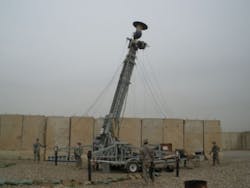Curtiss-Wright to design vibration-management computer for next-generation helicopter research demonstrator
The the AgustaWestland Rotorcraft Technology Validation Program is part of the United Kingdom Rotor Embedded Actuator Control Technology (REACT) project, launched in 2008 by AgustaWestland and the United Kingdom Technology Strategy Board in Swindon, England. The project seeks to develop active surfaces in helicopter rotor blades, and active hydraulic systems in rotor controls, which continuously vary the aerodynamics of the rotors to produce the best possible performance.
The REACT program also seeks to study the feasibility of a flexible helicopter rotor trailing edge, and the most efficient transfer of power to the helicopter rotor blades. Active rotor technology could benefit military and commercial helicopter operators by providing a jet-smooth ride to reduce pilot fatigue, reduce helicopter noise, and improve rotor efficiencies.
The AgustaWestland RTVP demonstrator will be the full-scale laboratory validation of the technology. The REACT program also seeks to deploy a prognostic system on helicopter main rotors to detect damage and predict the remaining life left in the helicopter's safety-critical components. Also participating in the 8.8 million-pound REACT program are Bristol, Leicester and Liverpool universities.
For more information contact Curtiss-Wright Controls Electronic Systems online at www.cwcelectronicsystems.com, AgustaWestland at www.agustawestland.com, or the United Kingdom Technology Strategy Board at www.innovateuk.org.
